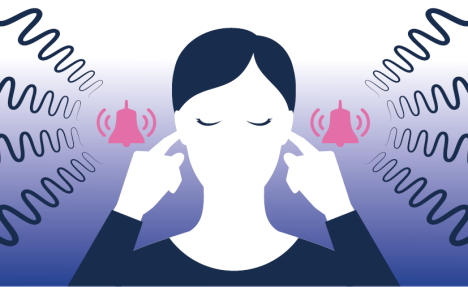 Tinnitus: Description and Prevalence
Tinnitus: Description and Prevalence
If you experience continuous or spontaneous ringing, noise, or other internal sound in your ears, you have tinnitus. You are not alone. One in 10 people have a similar problem and many people report that their level of tinnitus is disabling. Are you one of them?
Two Types of Tinnitus
There are two types of tinnitus, objective and subjective. Objective tinnitus is real acoustic noise that is generated in your head by a turbulence of congested blood flow, “loose” bones, or other physical phenomena that, in many cases, may be fixed. Of course, you would need to consult a doctor to achieve this. Objective tinnitus is rare and it is much more likely that you have subjective tinnitus. Subjective tinnitus in not a real acoustic sound; it is a phantom sound that is generated in your auditory system, which includes the brain. Due to the high correlation between tinnitus and hearing loss, some scientists believe that in an attempt to restore missing audio for those with hearing loss, the auditory neurons in the brain become hyperactive and misfire. The result: tinnitus.
What Can Be Done to Alleviate Tinnitus?
There are some working approaches that can reduce the problem, or even inhibit it for some time. Tinnitus masking is probably the most common one. Tinnitus masking consists of hearing an external sound that perceptually resembles the internal, phantom sound, but has a slightly louder volume so that the internal sound is not heard or, as we say, “it is masked by external stimuli”. Our brain knows how to ignore continuous external sounds and after getting used to them, the brain will ignore them – together with the actual tinnitus. This artificial external sound is called the “Tinnitus Masker” or, simply, “the Masker”. For some people, after hearing the Masker for certain amount of time and then switching it off, the tinnitus may be temporarily attenuated (weakened), or completely disappear. This phenomenon is called “residual inhibition” and it is experienced by 8 out of 10 people. The tinnitus will eventually come back, but the process of using the Masker may be repeated.
What is the Best Way to Create Tinnitus Masking?
The key to successful tinnitus masking and inhibition is the ability to define and play the real sound that matches, as closely as possible, the phantom sound of the tinnitus in pitch (frequency), sharpness, and volume. Traditionally, it requires visiting a professional and buying a tinnitus masker device, or hearing aids with tinnitus masking functionality. The professional will help you to find the right masking sound by asking questions and adjusting tones or noises you hear until you find the right one that masks your tinnitus with the minimal volume. This may be a lengthy and expensive procedure.
How is Alango – BeHear Addressing the Scourge of Tinnitus?
Alango Technologies has developed a way to make the process of matching your personal tinnitus as simple and intuitive as possible. It allows you to try the tinnitus masking approach without spending a lot of time and money. It may also help you where hearing aids cannot (due to the limited frequency range of hearing aids which cannot reproduce the high pitched sound of your tinnitus).
How Does BeHear Tinnitus Masking Work?
W&H BeHear app users can create a masking noise. Five different parameters can be customized:
(1) Frequency/Pitch
(2) Sharpness/Clarity
(3) Volume
(4) Modulation (pace of sound cycles)
(5) Balance between ears
Once the noise that best matches the user’s tinnitus has been determined, it can be toggled on/off from either the headset or the app.
Watch this video for an overview of the application:
The tinnitus masking feature may provide relief for your tinnitus by allowing you to match an external sound to your unique internal sound (“tinnitus”), using five parameters:
(1) Frequency/Pitch
(2) Sharpness/Clarity
(3) Volume
(4) Modulation (pace of sound cycles)
(5) Balance between ears
The tinnitus masking feature is currently available in the BeHear ACCESS Model II headset.
Operating Overview
Once you have downloaded and paired the BeHear application with your BeHear SMARTO hearing amplifier, it will be used to simulate the irritating sound heard in your ear(s). Using its graphic user interface you will locate the sound that best matches your tinnitus.
You can use the BeHear ACCESS headset to activate/deactivate the tinnitus masking noise by pressing both bottom buttons on the control boxes simultaneously.
Share this:
Want More Information?
Join our mailing list to get updates about BeHear products, pricing, and availability.
 Tinnitus: Description and Prevalence
Tinnitus: Description and Prevalence

